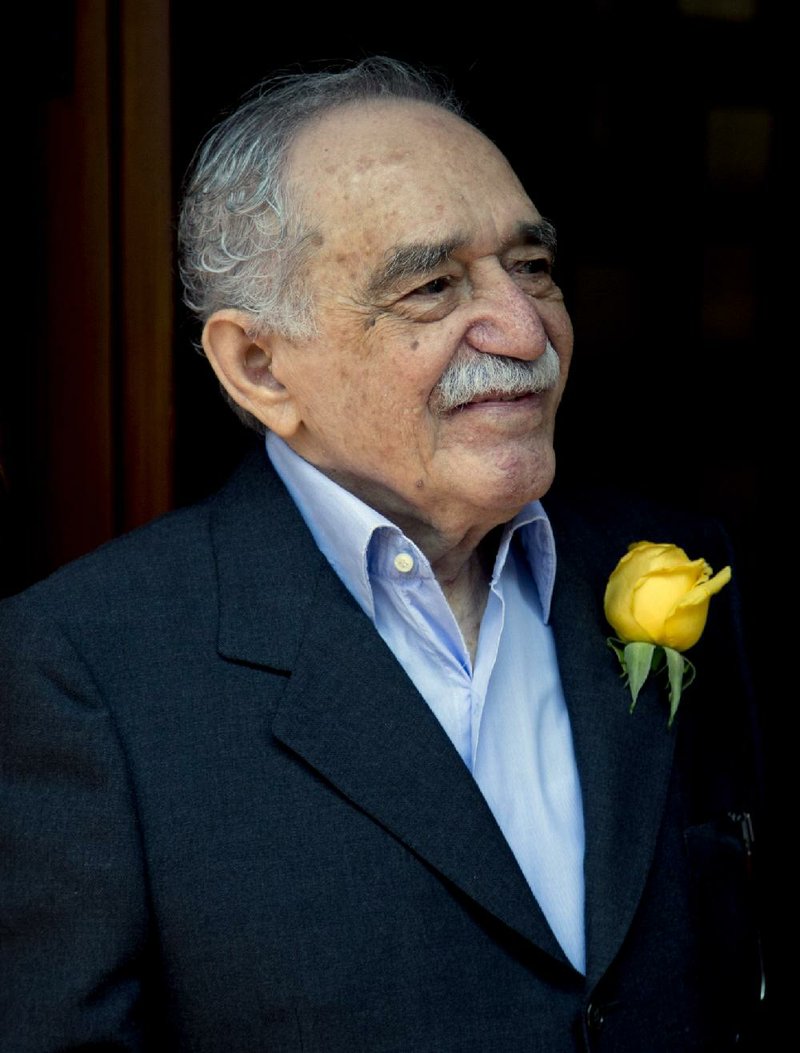Gabriel Garcia Marquez, whose novel One Hundred Years of Solitude put Latin America and the style known as magical realism on the international literary map, has died. He was 87.
He died Thursday at his home in Mexico City surrounded by his family, said Rafael Tovar y de Teresa, head of Mexico’s cultural agency.
With the success of One Hundred Years of Solitude in 1967, Garcia Marquez won wealth, fame and access to world leaders after years of struggle as a journalist steeped in leftist politics. In his native Colombia, he served as an intermediary between rebels and the government, and he was a longtime supporter and friend of Cuban leader Fidel Castro. In 1982, he won the Nobel Prize in literature.
“A rare phenomenon,” biographer Gerald Martin wrote in Gabriel Garcia Marquez: A Life (2008). “He is a serious but popular writer - like Dickens, Hugo or Hemingway - who sells millions of books and whose celebrity approaches that of sportsmen, musicians or film stars.”
Garcia Marquez lived in Mexico for several periods of his life, starting in the early 1960s. It was at his home on the south side of Mexico City where he wrote One Hundred Years of Solitude and where, in March, he welcomed - with his signature yellow rose on his lapel - a mariachi group that serenaded him for his 87th birthday.
The social and political struggles of Latin Americans formed the basis of Garcia Marquez’s stories, including One Hundred Years of Solitude.
The novel tells the multigenerational story of a family in a poor, fictional village called Macondo, where the men dream, the women are strong and civil war is a constant. Rich in imagination, the book reflects both the hard clarity of Garcia Marquez’s years in journalism and the magic of the many stories and ghosts that colored his youth in a small village.
His injection of the supernatural into depictions of everyday life made Garcia Marquez an oft-cited practitioner of the artistic technique known as magical realism.
Former President Bill Clinton released a statement saying he was saddened to learn of Marquez’s death.
“From the time I read One Hundred Years of Solitude more than 40 years ago, I was always amazed by his unique gifts of imagination, clarity of thought, and emotional honesty,” Clinton said. “He captured the pain and joy of our common humanity in settings both real and magical. I was honored to be his friend and to know his great heart and brilliant mind for more than 20 years.”
Among Garcia Marquez’s other major works of fiction are The Autumn of the Patriarch (1975), The General in His Labyrinth (1989) and Love in the Time of Cholera (1985). The last was made into a film released in 2007.
Garcia Marquez had a lifelong interest in cinema and spent several years as a freelance screenwriter. When riches came, he donated substantial sums to support film studies in Latin America.
Though he remained involved in his own film projects into the late 1990s, he never allowed One Hundred Years of Solitude to be adapted as a movie, even after actor Anthony Quinn offered $1 million for the rights, Martin said.
Gabriel Garcia Marquez was born in the village of Aracataca - the model for Macondo - near Colombia’s Caribbean coast. The date was March 6, 1927, according to Martin, his biographer.Garcia Marquez had claimed to be one year younger, born on March 6, 1928, which is the date given on his biography on the Nobel Prize website.
Separated from his parents in infancy, he was raised for a time by his grandparents in their large, busy home before reuniting with his parents at age 8. The house haunted him for years, inspired his first efforts at a novel and figured prominently in One Hundred Years of Solitude.
During law studies that took him to two universities before he quit without a degree, he began to work as a journalist in Cartagena at 21. The demands of regular reporting and opinion columns honed his powers of observation and revealed the strength and cleverness of leftist views he was able to convey through periods of censorship and violent repression by conservative Colombian governments.
He married Mercedes Barcha in 1958, more than 12 years after he proposed to her, and they soon had two sons, Rodrigo and Gonzalo Garcia Barcha.
Also during the 1950s, Garcia Marquez twice visited Eastern Europe, surveying the effects of communism. He was one of the first journalists to visit post-revolutionary Cuba, arriving 18 days after Castro entered Havana on Jan. 1, 1959.
Their lifelong camaraderie was why, for 30 years, he could travel to the U.S. only on a restricted visa.
Later in life, Garcia Marquez used his celebrity and wealth to promote human rights, press freedom and Latin American cinema.
Information for this article was contributed by Carlos Manuel Rodriguez of Bloomberg News.
Front Section, Pages 2 on 04/18/2014

